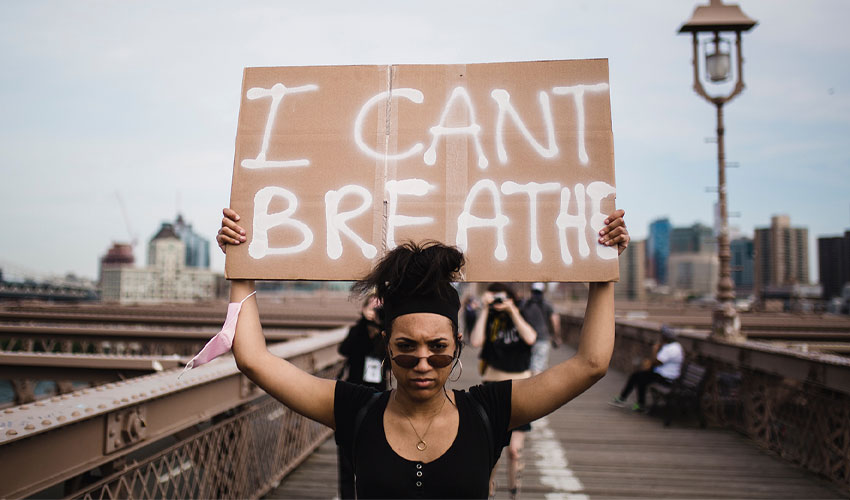
How a Hashtag Can Shape a Movement
Analysis of Social Movement Theory with Twitter and the Black Lives Matter Movement
This study is an exploration of social movement theory and how it can be applied to the field of journalism. Differing characteristics of social movements are defined and related back to journalism and media studies. The scope of the dissertation narrows in on the specific event of the Black Lives Matter protests in the United States during the summer of 2020. The thesis serves an in-depth analysis on how the social media platform Twitter is utilized as a tool by verified actors, journalists, and individual citizens. The methodology of the dissertation is a mixed method of both quantitative and qualitative. The hashtag #BlackLivesMatter is used as the main search key to accumulate the data. The top retweeted tweets of the day with the largest numbers of tweets using #BlackLivesMatter serves as the timeline for the research.
Mecodify is the data retrieving tool utilized to gather data from Twitter’s API system. This dissertation serves the purpose of analyzing how modern social media platforms are used as a mechanism to exchange news and information during a social movement. In addition, investigating if hashtags on Twitter’s platform can form collective identities, and inciting movement for social justice.
Background of Black Lives Matter Movement
As far as social movements go, the United States has had its fair share of nationwide protests. From #MeToo, the Women’s March, and the first Civil Rights Movement in the 1950s and 60s. There have been multiple studies completed on social movements and what drives people to gather and organize protests to seek social justice. With the modernization and increasing use of the internet and social media, it adds another element to the building and mobilization of a movement.
One movement that is currently spreading globally is the Black Lives Matter Movement. Although it has been 40 years since the conclusion of the Civil Rights Movement, there is continued violence and oppression towards Black Americans, which has incited the new social movement known as the Black Lives Matter Movement (Clare, 2016). The movement began with a hashtag, created on Facebook in 2013. The movement was sparked after the acquittal of George Zimmerman—the neighborhood watchman who shot and killed 17 year-old Trayvon Martin. Zimmerman claimed Martin looked suspicious and thought he had been carrying a gun, and shot and killed him in supposed defense. Alicia Garza, Patrisse Cullors, and Opal Tometi are the three women who coined the now famous hashtag #BlackLivesMatter because of the nonguilty verdict of Zimmerman. Their combined frustration led to the creation of the hashtag #Blacklivesmatter, which later merged into an entire organization.
As stated on their website, the Black Lives Matter Movement “seeks to eradicate the white supremacy that is behind the violence inflicted on Black communities by the State and vigilantes” (Black Lives Matter, 2021). Black Lives Matter can be described as a grassroots movement- meaning using people in a community as the basis for political or economic movement. Grassroot movements use collective action from the local level to effect change at the local, regional, national, or international level (Yenerall, 2017). Along with providing helpful resources through the website, the Black Lives Matter Movement functions as a vehicle for social movement. The movement was highlighted in the 2015 Time’s Magazine Person of the Year article: “Black Lives Matter is anchored in the physical occupation of public space and amplified by social media” (Altman, 2015). What makes this movement so popular is the help of technology and mass spread on social media. For it was the hashtag #BlackLivesMatter that gave the movement momentum from the beginning. Young activists have been able to use the hashtag #BlackLivesMatter as a rallying cry on social media and have been capable of organizing and mobilizing protests across the United States.
During an interview conducted on April 21, 2021, freelance journalist and grassroots attorney Anoa Change discussed Twitter’s impact on social movements. From her own experience, Changa has seen a rise in the use of Twitter for social movements because of the accessibility and sense of community that is formed around a campaign. The individual “I” changes into a “we”, and there is a stream of consciousness feel to each tweet—each a new thread or point of view to consider on the topic. With Black Lives Matter specifically, she claims that the hashtag #BlackLivesMatter is both recognizable and easy, and the plus side of such a generic hashtag is that it can be used for different purposes—even if it is not directly connected to the Black Lives Matter organization. Changa concludes this is most likely why it has spread so much over the last few years. The movement has now grown from a hashtag into a global network engaging nonviolent action to bring attention to racial injustices, with over 30 chapters in the United States and other countries around the world (Black Lives Matter, 2021).
Both the movement and the hashtag were called upon again in the summer of 2020, when a particular incident created the largest spike in the hashtag’s engagement on Twitter. On May 25th, 2020—a Black American male named George Floyd was killed by an officer on duty during an attempted arrest. What made this such a global phenomenon was that the incident was recorded—and then shared via Facebook. The 8-minute video went viral and spread to other social networking platforms such as Twitter. The video, combined with the national lockdown due to global pandemic COVID-19, caused the virality of the hashtag to surpass any numbers it had reached prior. Within the first day after his death there were roughly 218,000 tweets containing the hashtag #Blacklivesmatter, and once protests began in Minneapolis and spread across the globe, the daily use of the hashtag passed 1 million on May 27th (Anderson et al, 2020). The following day—May 28th—the hashtag reached its highest number of uses in a single day—8.8 million (ibid, 2020). This specific date is where the focus of this dissertation begins.
Twitter as a form of Journalism
Ryfe argues in The Handbook of Journalism Studies that journalism is not reaching its shelf life but is instead switching focus, potentially to new mediums and theories which includes digital journalism. (Ryfe, 2019). Digital journalism blurs the boundaries of the actors—journalists and citizens—and helps create a new public sphere for news and communication (Dickens et al, 2015). This can be highlighted through the advancement of technology and increasing popularity of social media. The use of social media has changed the way that people, communities, and organizations communicate and interact (Ngai et al, 2015). Additionally, social media provides a portal into how people create narratives that survive over time and become ingrained into society (Ray et al, 2017).
Among the various social media applications, Twitter is a standout amongst the rest due to its real-time nature (Nazir, 2019). Twitter is a social networking platform that allows users to send and receive short text-based posts known as “tweets” (Moon & Hadley, 2014). In addition, the free micro-blogging platform is limited to 140 characters (Jewitt, 2009). Users can like tweets, as well as “retweet”—a function in which another user can share what someone has posted on their own feed or “timeline”. Hashtags are an important tool used on Twitter that make it unique to other social media platforms. Hashtags categorize messages or build communities around a specific topic of interest (Ferragina et al, 2015). With the use of these functions Twitter can become like an awareness system, “broadcasting” breaking news on the mainstream feed (Moon & Hadley, 2014).
Twitter is unique in the way that it places individuals at the very center of a vast network (Leong et al, 2019). The real-time publishing of posts, combined with the grouping of hashtags and virality of retweets give Twitter an advantage when it comes to social movement organizing. By assigning a ‘#’ sign, or hashtag to a specific word or phrase, Twitter uses are able to access an organized top of discussion, a “cut-through way” to reach users discussing the same thing (Moe & Larsson, 2013). Hashtags are inclusive and democratic in the way that any Twitter user can use the tool (Enli et al, 2018). Hashtags can also be seen as a substitute for physical presence of participants, organizers, or moderators (ibid, 2018).
Twitter serves as a non-institutional channel which allows the powerless—everyday citizens—to voice their grievances in an online forum. Creating this channel allows for individuals to “activate and act as catalysts of collective action”, which helps to promote grassroots selforganizing (Cardoso, Boudreau, & Carvalho, 2013, p. 3). There is a more expansive path through the self-motivated sharing of personalized content on social media—and it allows dispersed individuals to come together spontaneously (Leong et al, 2019). Figure 1 (Leong et al, 2019) breaks down social media-enabled movements to try and understand how individuals and grassroots organizations drive a social movement.
To read more, please download the PDF here.

